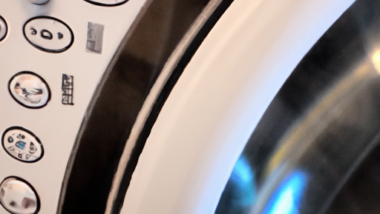If you’ve ever wondered whether a programmable thermostat can help you cut down on those hefty energy bills, the answer is a resounding yes! Not only can a programmable thermostat save you money, but it also offers convenience and efficiency. By allowing you to set different temperature schedules throughout the day, you can ensure that your home is comfortable when you’re there, and more energy efficient when you’re not. But how exactly should you utilize this magical device? Fear not, for we will guide you through the simple steps to maximize its potential and start enjoying the benefits of energy savings in no time.
The Benefits of Using a Programmable Thermostat
Reduced energy consumption
By using a programmable thermostat, you have the ability to control the temperature in your home with precision. This means you can set specific temperature schedules according to your daily routine, ensuring that your heating and cooling system is only running when necessary. As a result, you can significantly reduce your energy consumption and minimize wasted energy.
Lower energy bills
Reducing your energy consumption directly translates to lower energy bills. By optimizing your temperature settings with a programmable thermostat, you can avoid unnecessary heating or cooling when you’re not at home or during times when it’s not needed, such as while you’re sleeping. This leads to substantial savings on your monthly energy bills, allowing you to put that money towards other important expenses.
Increased comfort and convenience
One of the greatest advantages of a programmable thermostat is the increased comfort and convenience it provides. With the ability to pre-set your desired temperature based on your schedule, you can ensure that your home is always at the optimal temperature when you need it. Whether you prefer a cozy environment in the morning, a cooler temperature during the day, or a cozy retreat in the evening, a programmable thermostat can help you achieve that level of comfort with ease.
Understanding Programmable Thermostats
Definition and functionality
A programmable thermostat is a device that allows you to program and control temperature settings in your home. It works by communicating with your heating and cooling system to maintain the desired temperature at different times of the day. By setting specific temperature schedules, you can automate your HVAC system and ensure efficient and comfortable heating and cooling.
Types of programmable thermostats
There are various types of programmable thermostats available, each with its own features and capabilities. The most common types include 7-day programmable thermostats, 5+2 day thermostats, and 5-1-1 day thermostats. 7-day programmable thermostats offer the most flexibility, allowing you to set a different schedule for each day of the week. 5+2 day thermostats allow separate weekday and weekend schedules, while 5-1-1 day thermostats provide a separate schedule for weekdays and individual schedules for Saturday and Sunday.
Features and programmable settings
Programmable thermostats come with a range of features and settings that enhance their functionality. Some advanced models offer Wi-Fi connectivity, allowing you to control your thermostat remotely through smartphone apps or integrate it into your smart home system. Additional features may include touchscreens, voice control, humidity control, and adaptive learning capabilities. It’s important to consider the specific features and settings that would best suit your needs when choosing a programmable thermostat.
How Programmable Thermostats Can Save on Energy Costs
Customizable temperature schedules
The ability to create customized temperature schedules is one of the most significant ways a programmable thermostat can save on energy costs. By setting specific temperatures for different times of the day, you can ensure that your heating and cooling system runs only when necessary. For example, you can program the thermostat to lower the temperature while you’re away at work and raise it just before you return home, ensuring energy is not wasted on heating or cooling an empty house.
Zoned heating and cooling
Many programmable thermostats support zoning systems, which allow you to divide your home into different zones and control the temperature independently in each zone. This is especially useful if different areas of your home have varying temperature needs, such as bedrooms that require cooler temperatures for better sleep. By only heating or cooling the zones that are occupied, you can reduce energy consumption and increase comfort in your home.
Smart and adaptive features
Modern programmable thermostats often come equipped with smart and adaptive features that maximize energy savings. These thermostats can learn your temperature preferences and daily routines, adjusting the temperature accordingly to optimize comfort and energy efficiency. Some models even have occupancy sensors that can detect when rooms are unoccupied and automatically adjust the temperature to conserve energy.
Temperature setbacks and setups
Temperature setbacks and setups are additional energy-saving techniques enabled by programmable thermostats. A temperature setback is when you reduce the temperature setting during certain periods, such as at night or when you’re away from home for an extended period. Conversely, a temperature setup is when you increase the temperature setting before you normally use a particular space, such as pre-warming a room before waking up in the morning. By utilizing these setback and setup periods, you can minimize energy usage and still enjoy a comfortable environment.
Choosing the Right Programmable Thermostat
Compatibility with your HVAC system
Before purchasing a programmable thermostat, it’s crucial to ensure compatibility with your heating, ventilation, and air conditioning (HVAC) system. Different thermostats have different compatibility requirements, such as the necessary wiring connections and voltage ratings. It’s recommended to consult with a professional or refer to your HVAC system’s documentation to ensure you choose a compatible programmable thermostat.
User-friendly interface and controls
A user-friendly interface and intuitive controls are important factors to consider when selecting a programmable thermostat. You want a thermostat that is easy to understand and navigate, allowing you to quickly adjust temperature settings and customize schedules. Touchscreen interfaces and clear menu options can greatly enhance the user experience and make programming your thermostat hassle-free.
Support for multiple zones
If you have a zoned heating and cooling system or plan to implement one in the future, it’s essential to choose a programmable thermostat that supports multiple zones. This ensures that you can control the temperature in each zone independently and take full advantage of the energy-saving benefits offered by zone-specific temperature control.
Wireless connectivity options
Wireless connectivity options, such as Wi-Fi, can greatly enhance the functionality and convenience of your programmable thermostat. With wireless connectivity, you can control your thermostat remotely through smartphone apps or integrate it into your smart home system. This allows you to adjust temperature settings while you’re away from home, ensuring optimal comfort and energy efficiency.
Energy-saving certifications
Look for programmable thermostats that carry energy-saving certifications, such as ENERGY STAR. These certifications indicate that the thermostat has been independently tested and meets strict energy efficiency standards. By choosing a certified thermostat, you can be confident that you’re investing in a device that will help you maximize energy savings and reduce your environmental impact.
Installation and Setup Guidelines
Proper thermostat placement
Proper placement of your programmable thermostat is crucial to its effective operation. Install the thermostat away from direct sources of heat or cold, such as windows, doors, or vents. Also, avoid placing it in areas with excessive drafts or direct sunlight. Ideally, the thermostat should be located in a central area of your home to provide an accurate representation of the overall temperature.
Wiring and connection process
If you’re installing the programmable thermostat yourself, it’s essential to carefully follow the manufacturer’s instructions for wiring and connection. Incorrect wiring can lead to malfunctioning or damaged equipment. If you’re unsure about the installation process, it’s recommended to consult a professional HVAC technician or electrician for assistance.
Programmable settings adjustment
Once the thermostat is properly installed, take the time to customize the programmable settings according to your preferences. Set up the desired temperature schedules for different times of the day, taking into account your daily routine and heating or cooling needs. Refer to the thermostats’ user manual or online resources for guidance on adjusting the settings effectively.
Connecting to a home automation system
If you have a home automation system, you may have the option to integrate your programmable thermostat into the system. This allows you to control the thermostat through the automation system’s interface or smartphone app. Follow the specific instructions provided by your home automation system’s manufacturer to connect and configure your programmable thermostat for seamless integration.
Optimizing Energy Savings with a Programmable Thermostat
Establishing temperature schedules
To achieve optimal energy savings, it’s important to establish temperature schedules that align with your daily routine. Consider the times when you’re typically away from home or when certain spaces are unoccupied. By setting lower temperature points during those periods, you can save energy without sacrificing comfort. Additionally, schedule temperature setups to ensure the desired comfort level when you return or wake up.
Utilizing setback and setup periods
Temperature setbacks and setups are effective ways to further maximize energy savings. During periods when you’re away or sleeping, program the thermostat to lower the temperature by a few degrees. This can result in significant energy savings while still ensuring a comfortable environment when you’re actively using the space. Conversely, configure temperature setups to raise the temperature just before you need a specific space, avoiding unnecessary heating or cooling during idle periods.
Handling vacations and extended absences
When you’re away from home for an extended period, such as vacation or a business trip, take advantage of the thermostat’s vacation mode or temporary hold feature. This allows you to set a consistent temperature throughout the house or minimize energy usage while you’re away. By utilizing this option, you can avoid wasting energy on heating or cooling an unoccupied space.
Optimizing temperature settings for efficiency
Experiment with different temperature settings to find the optimal balance between comfort and energy savings. Lowering the temperature by just a degree or two can make a noticeable difference in energy consumption and ultimately reduce your energy bills. Additionally, utilize the thermostat’s adaptive features if available, allowing the device to learn your preferences and adjust temperature settings automatically for optimal efficiency.
Common Mistakes to Avoid
Setting unrealistic temperature changes
Avoid setting temperature changes that are too drastic or unrealistic. While it may seem tempting to set a high temperature during winter or a very low temperature during summer, this can lead to unnecessary energy consumption and discomfort. Aim for gradual and reasonable temperature changes to ensure both energy efficiency and comfort.
Ignoring maintenance and calibration
Regular maintenance and calibration of your programmable thermostat are important to ensure accurate temperature control and energy savings. Dust and debris can accumulate over time, affecting the thermostat’s performance. Clean the thermostat regularly and consult the manufacturer’s recommendations for proper maintenance and calibration procedures.
Neglecting temperature setbacks/setups
Failing to utilize temperature setbacks and setups can significantly reduce the energy-saving potential of your programmable thermostat. Make sure to program these periods effectively to avoid unnecessary heating or cooling when you’re not actively using a space. Utilizing temperature setbacks and setups is a simple yet effective way to save on energy costs.
Not utilizing multiple zones effectively
If you have a zoned heating and cooling system, it’s essential to take full advantage of the multiple zones and control them efficiently. Set appropriate temperature schedules for each zone, ensuring that only the necessary zones are heated or cooled according to occupancy. Neglecting the zoning capabilities of your programmable thermostat can lead to wasted energy and increased utility bills.
Integrating Programmable Thermostat with Home Automation
Connecting to smart home hubs
If you have a smart home hub or automation system, connecting your programmable thermostat can provide additional convenience and control. Check if your thermostat is compatible with your home automation system and follow the manufacturer’s instructions to integrate them seamlessly. Once connected, you’ll be able to control the thermostat through the hub’s interface, voice commands, or smartphone app.
Controlling via smartphone apps
Many programmable thermostats come with dedicated smartphone apps that allow you to control and monitor your thermostat remotely. By downloading the app and connecting it to your thermostat, you can adjust temperature settings, create custom schedules, and even receive alerts or notifications about your HVAC system’s performance. Smartphone apps add an extra level of convenience and accessibility to your programmable thermostat.
Creating energy-efficient scenes
If your home automation system supports scenes or routines, take advantage of these features to create energy-efficient setups. For example, you can create a “Goodnight” scene that dims the lights, turns off unnecessary electronics, and sets the thermostat to an energy-efficient temperature for the night. This way, you can optimize energy savings with just a simple command or button press.
Monitoring and analyzing energy usage
Integrating your programmable thermostat with a home automation system often allows you to monitor and analyze your energy usage. With access to detailed energy consumption data, you can identify patterns and make informed decisions about adjusting temperature settings or optimizing your energy usage further. Monitoring and analyzing energy usage can be invaluable in maximizing the energy-saving potential of your programmable thermostat.
Tips for Maximizing Energy Savings
Regularly updating temperature schedules
As your daily routine and heating or cooling needs change, it’s important to regularly update your programmable thermostat’s temperature schedules. This ensures that you continue to optimize energy usage and maintain a comfortable environment. Review and modify the schedules periodically to reflect any lifestyle changes or adjustments in your heating and cooling requirements.
Taking advantage of temperature setbacks
Make a habit of utilizing temperature setbacks during periods when you’re away or asleep. By lowering the temperature even a few degrees during these times, you can save energy without sacrificing comfort. Experiment with different setback temperatures to find the right balance between energy savings and maintaining a cozy environment.
Considering energy-efficient temperature ranges
Be mindful of the recommended energy-efficient temperature ranges for each season. During summer, aim for a temperature range between 75-78°F (24-26°C) for optimal energy savings, while during winter, target a range between 68-72°F (20-22°C). By setting your temperature within these ranges, you can achieve a comfortable environment while still saving on energy costs.
Periodic thermostat usage evaluation
Take the time to periodically evaluate your programmable thermostat’s usage and performance. Review your energy bills, monitor the actual temperature settings, and consider any changes in your household’s needs. By regularly assessing your thermostat’s effectiveness, you can identify areas for improvement and make adjustments to maximize energy savings.
Conclusion
Using a programmable thermostat offers several benefits, including reduced energy consumption, lower energy bills, and increased comfort and convenience. By understanding the functionality and features of programmable thermostats, you can make an informed decision when choosing the right thermostat for your needs. Proper installation and setup, along with effective utilization and optimization strategies, will help you maximize energy savings and take full advantage of the potential offered by programmable thermostats. With the integration of programmable thermostats into home automation systems, controlling and monitoring your thermostat becomes even more convenient, allowing for greater energy efficiency and cost savings. By following these guidelines, tips, and avoiding common mistakes, you can experience the full benefits of using a programmable thermostat and contribute to a greener and more energy-efficient future.


